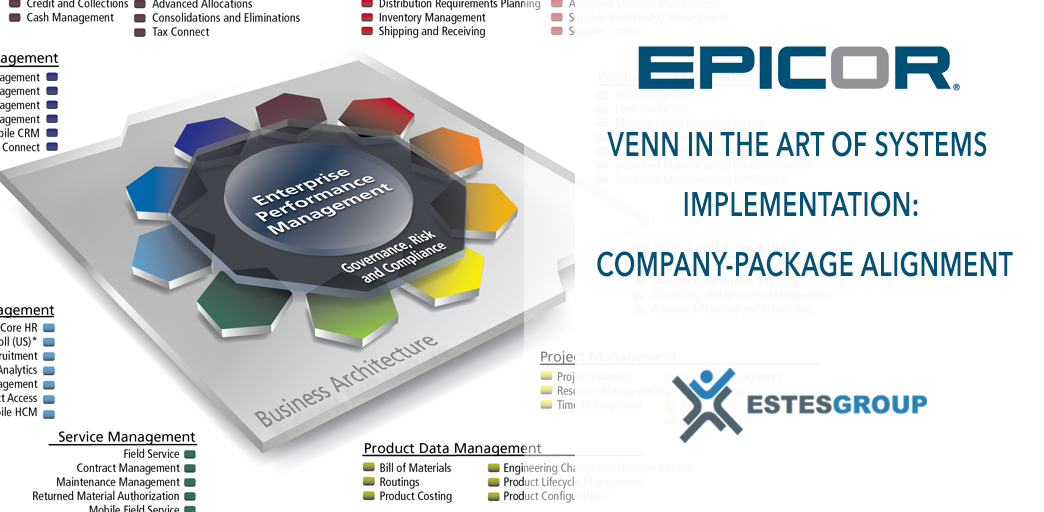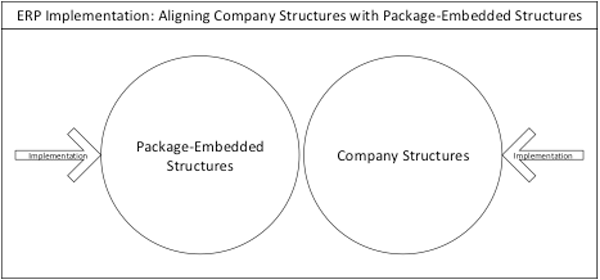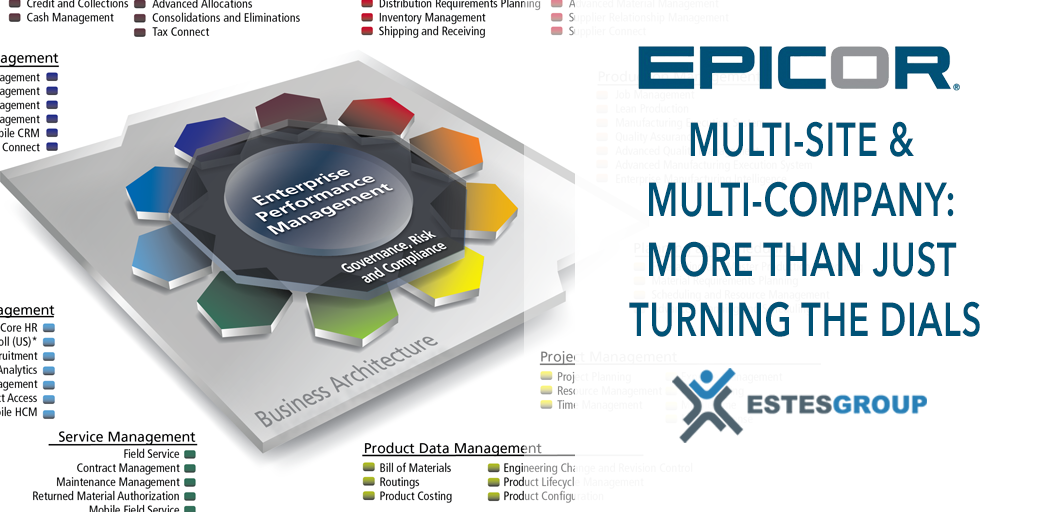
Venn in the Art of Systems Implementation: Company-Package Alignment
Contemporary systems theories frequently explain application implementations using the paradigm of structures. A structure can be thought of as a pattern of behavior implicitly used to govern a business process, be it system-driven or manual in nature. From the structuralist perspective, an organization consists of multiple overlapping structures, which guide the way it does business. An ERP system similarly consists of structures, which guide its functionality. ERP implementation strategy thus constitutes a situation in which the structures inherent in an organization’s business process need to be brought into harmony with the structures provided by the implemented package. The familiar Venn diagram is helpful in representing the challenge of integrating or “overlapping” enterprise package-embedded structures and company structures:

Adapted from Soh and Sia, 2005
Ideally when implementing the system, a perfect overlap can be identified between the ERP structure and the company structure—that is, the capabilities of the system perfectly address the business requirements of the implementing company. Using the Venn diagram, this would be depicted by the two structure-circles perfectly overlapping. In reality, this rarely occurs—even when the best possible system is selected for a given implementation, misalignments between company structures and package-embedded structures inevitably occur. Veteran project managers do not panic when misalignments are identified, as they understand this inevitability. The goal of an ERP implementation strategy is to maximize the overlap between the company and the package, understanding that misalignments will occur.

Adapted from Soh and Sia, 2005
Given the inevitability of misalignments between ERP structure and company structure, it comes as no surprise that successful implementation projects surface misalignments early, and identify them clearly. Once identified, work can begin to resolve the misalignments and “close the gaps.” According to some theorists, organizations have one of two options when closing the gaps created by structural misfits: organizational adaptation or package modification.

Adapted from Soh and Sia, 2005.
As part of an Epicor ERP implementation strategy, organizational adaptation may involve additional prototyping with the system’s standard configuration and master file settings, in order to identify alternative means of addressing the businesses requirements. It may also involve the creation of manual processes or “workarounds” to address business needs. Within an Epicor context, package modification may involve the creation of custom queries, dashboards or reports to address information requirements, or the customization of a given form to allow the entry of custom data fields. It also may involve the use of BPM’s to provide specific validation or automation functionality. It may further involve a Service Connect workflow to interface with an external payroll or Engineering system. Quite often, addressing misalignments between ERP structure and company structure involves a combination of configuration, workarounds, and customization. The overall goal of these activities is to minimize the degree of customization required while supporting the company’s strategic core competencies.
As we’ve noted, misalignments between ERP structure and company structure are a normal and expected occurrence in the course of implementing an enterprise system. Not surprisingly, successful projects are often defined not by the presence of misalignments, but by the project team’s reaction to them. When companies plan for misalignments as part of a normal implementation, they can focus on closing the gaps, without sending the company into a panic when they surface. In doing to, they improve their chances of successful implementation, and optimally using the package they’ve implemented.

